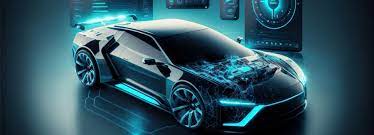
A vehicle’s starter is a crucial component that ensures the engine fires up smoothly. When you turn the ignition key or press the start button, the starter engages the engine, allowing it to run on its own. However, like any mechanical part, starters can wear out over time. Bad starter symptoms can manifest as a slow cranking engine, a clicking noise when turning the key, or the engine failing to start altogether. Understanding the different types of starters in vehicles can help you diagnose problems and make informed decisions about replacements or repairs.
Types of Starters in Vehicles
There are various types of starters used in vehicles, each with unique characteristics and advantages. Let’s explore the most common types:
1. Direct Drive Starter
The direct drive starter is one of the oldest and most basic starter designs. It consists of a motor that connects directly to the engine’s flywheel to turn the engine. While simple and reliable, this type of starter is relatively large and heavy. It also requires a higher current, making it less efficient compared to modern designs.
Pros:
Simple construction
Reliable operation
Cost-effective
Cons:
Large and heavy
Requires more power
Wears out faster than newer models
2. Gear Reduction Starter
A gear reduction starter motor is an improvement over the direct drive design. It features a small motor with a gear system that increases torque and reduces the size and weight of the starter motor. This type is more efficient because it requires less electrical energy to start the engine.
Pros:
Lighter and more compact
Provides higher torque
More efficient than direct drive starters
Cons:
More complex design
Higher manufacturing costs
3. Permanent Magnet Starter
Permanent magnet starters use powerful magnets instead of field coils to generate motion. This results in a more efficient and lightweight starter that consumes less energy. Many modern vehicles use this type of starter due to its compact size and durability.
Pros:
Compact and lightweight
Energy-efficient
Longer lifespan compared to traditional starters
Cons:
Can be expensive
Less powerful than some other types
4. Planetary Gear Starter
This type of starter motor uses a planetary gear system to generate high torque with minimal energy consumption. The design allows for smooth and efficient operation, making it a popular choice in many modern vehicles, especially those with larger engines.
Pros:
High torque output
Energy-efficient
Smooth operation
Cons:
Complex internal mechanism
Higher cost of repair and replacement
5. Inertia Starter
The inertia starter, commonly used in diesel engines and older aircraft, relies on a rotating flywheel to generate the momentum needed to start the engine. This design is uncommon in modern vehicles, but can still be found in specialized applications.
Pros:
Simple design
No need for an electrical system in some cases
Cons:
Slow start-up time
Requires manual effort in some applications
6. Electric Starter Motor
The most commonly used starter motor in today’s vehicles is the electric one. It uses electrical energy from the battery to turn the engine’s flywheel and start the vehicle. This type of motor is reliable, fast and is found in almost all petrol and diesel cars.
Pros:
Fast and efficient
Reliable performance
Easy to maintain
Cons:
Dependent on battery power
Can fail due to electrical issues
Signs of a Failing Starter
Recognizing the warning signs of a failing starter can save you from unexpected breakdowns. Here are some common symptoms:
Clicking Sound: If you hear a rapid clicking noise when turning the key, your starter may be failing.
Slow Cranking: A sluggish engine crank could indicate a weak starter motor.
No Response: If the engine doesn’t respond at all when you turn the key, the starter might be completely dead.
Grinding Noise: A grinding sound could mean the starter gear is not engaging properly with the flywheel.
Smoke or Burning Smell: Overheating due to electrical failure can cause smoke or a burning odor.
How to Maintain Your Starter for Longevity
While starters are built to last, proper maintenance can help extend their lifespan. Here are some tips:
Keep Your Battery in Good Condition: A weak battery forces the starter to work harder, leading to premature failure.
Check Electrical Connections: Loose or corroded wires can disrupt the starter’s performance.
Avoid Frequent Short Trips: Starting your engine multiple times a day can put unnecessary strain on the starter.
Listen for Unusual Noises: Early detection of grinding or clicking sounds can prevent major issues.
Regular Inspections: Periodically have a mechanic check your starter and related components.
Conclusion
Understanding the different types of starters in vehicles can help you make informed decisions about repairs and replacements. Whether you have a traditional direct drive starter or a modern planetary gear starter, recognizing bad starter symptoms early on can prevent major inconveniences. If you suspect an issue with your starter, it’s best to consult a professional mechanic to diagnose the problem accurately. For more information on starters and how to address common vehicle issues, visit here for expert advice and solutions.